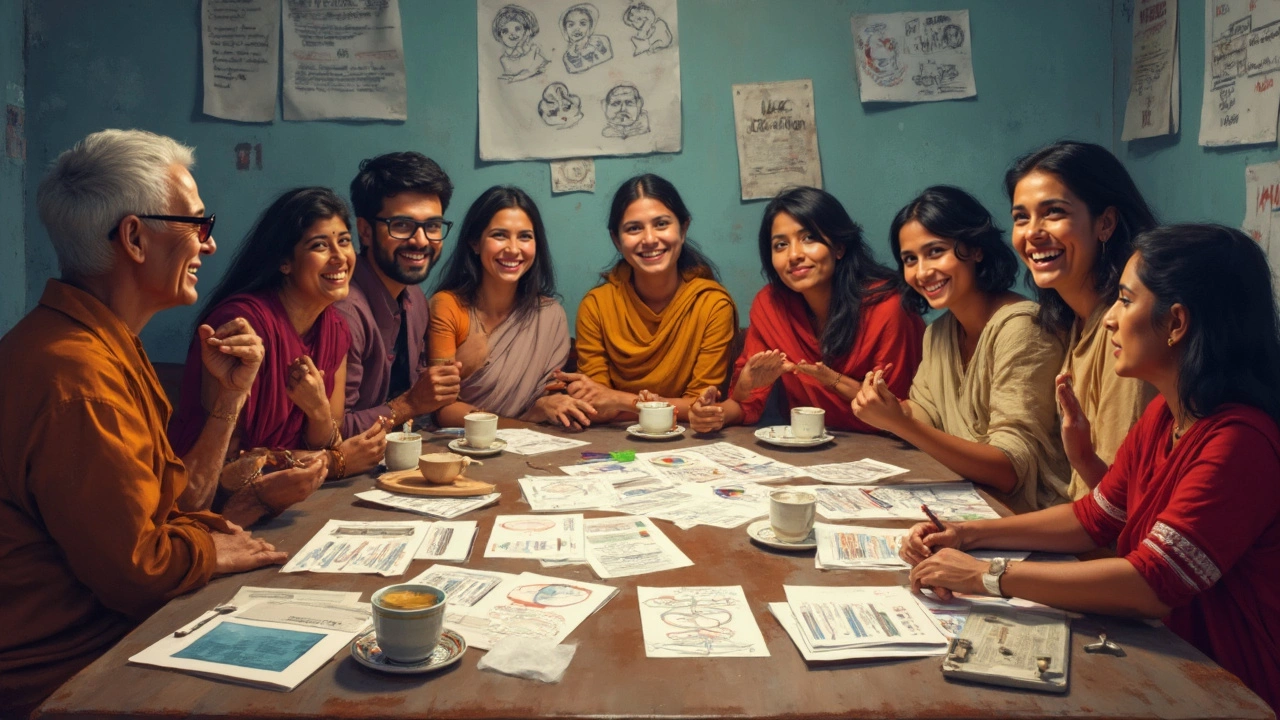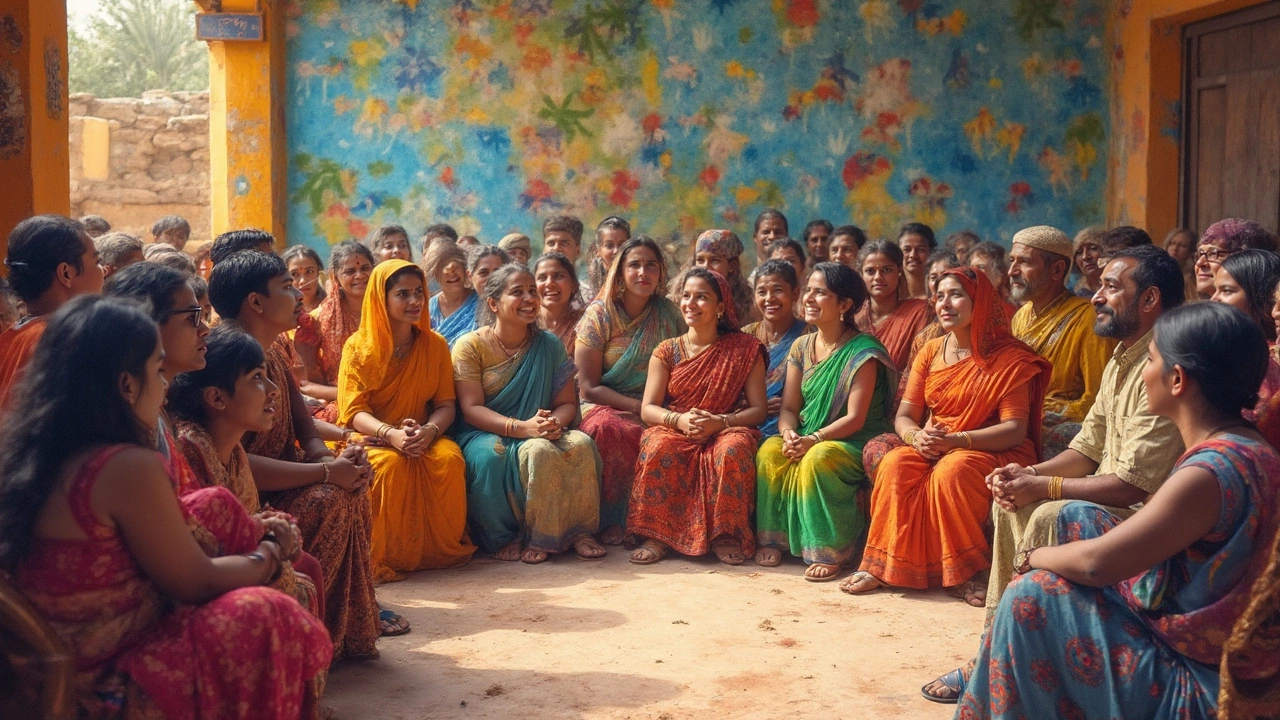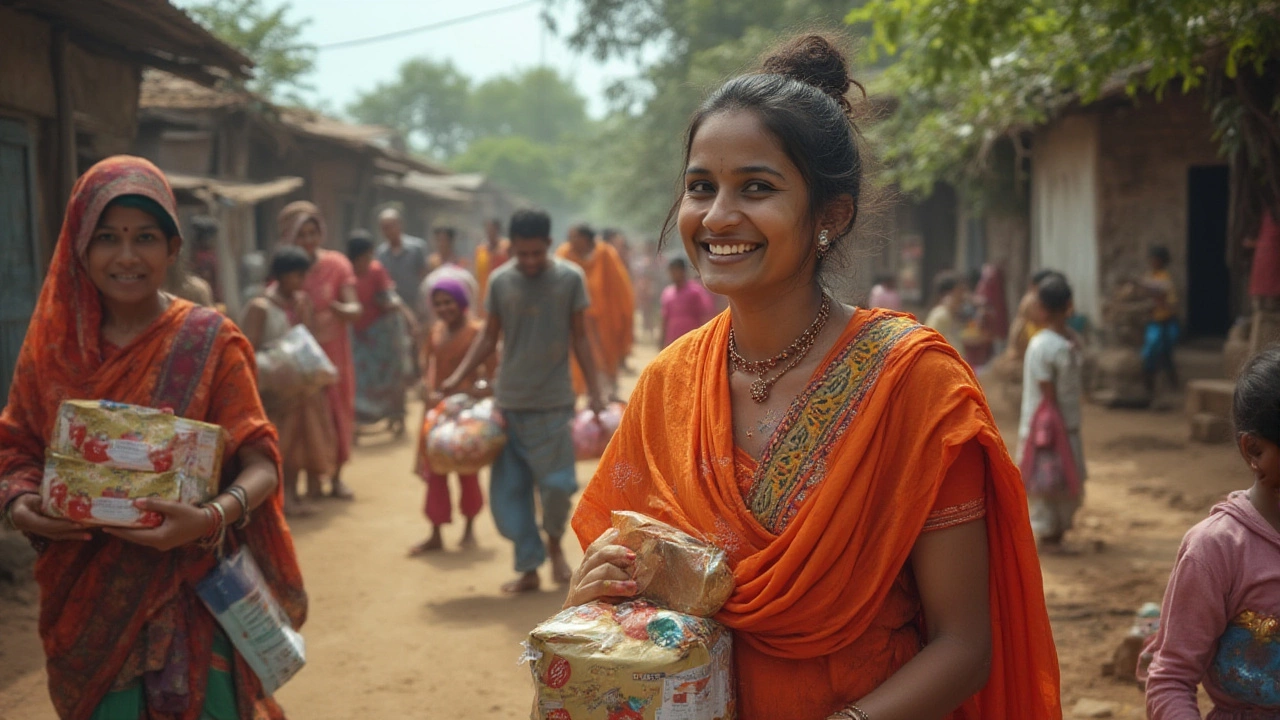Discover the most effective outreach tasks, creative activity ideas, and the secrets behind strong community engagement. Uncover practical tips and tools.

- Created by: Lydia Carmichael
- Completed on: 14 May 2025
- Categories: Community Support
Ever wonder what actually happens behind those flyers for neighborhood cleanups or free health checks? Community outreach isn’t just about handing out pamphlets or running food drives—there’s a lot more going on.
At the core, it’s about connecting with real people, listening to what they need, and acting on it. Instead of guessing what would help a community, good outreach means meeting folks where they are—sometimes literally. Maybe it’s setting up a booth at the local park or going door-to-door. Either way, genuine outreach puts people first and finds practical ways to make life better, without the awkward sales-y vibe.
If you’re curious about making change, or just want to support your community, understanding how outreach works is the first step. You don’t need a big team, a fancy title, or a fat budget—just a willingness to listen, learn, and show up. Keep reading to see why outreach works, who does it, and how you can jump in.
- What is Community Outreach, Really?
- Who Gets Involved and Why
- Common Outreach Methods That Get Results
- Real-World Examples You Can Learn From
- How to Start Your Own Outreach
- Tips to Keep the Momentum Going
What is Community Outreach, Really?
Community outreach isn’t some mysterious charity buzzword—it’s all about regular folks and organizations rolling up their sleeves to help others. At its heart, it means stepping out of your usual bubble to address real needs in your neighborhood, school, or workplace. The goal? Close the gaps in resources, support, or information that people face day to day.
Let’s break it down: outreach can include free medical screenings, after-school tutoring, helping the elderly with groceries, pulling together job fairs, or running COVID vaccine clinics. If it’s about showing up for people who might otherwise miss out, it’s probably outreach.
"Outreach is not about doing for, it's about doing with. When we listen to what people need and work alongside them, that's when change happens." – National Council of Nonprofits
What sets true outreach apart from just charity or advertising is the focus on building honest relationships and open communication. You don’t talk at people—you talk with them, and more importantly, listen. Listening is actually a big deal. In one national survey from 2023, 67% of participants said they felt more hopeful about the future when community programs actually asked for their input.
To get a grip on how outreach makes an impact, check out these quick stats:
| Year | Outreach Activity | People Helped (US) |
|---|---|---|
| 2022 | Food Drives | 27 million |
| 2023 | Health Clinics | 5.3 million |
| 2023 | Job Readiness Events | 1.7 million |
How does this look in action? Imagine a local *community outreach* project where volunteers come together to help students with their homework after school. It’s just one setup, but the same idea works whether you’re organizing a winter coat drive, sharing mental health resources, or offering tax prep workshops for free.
The main thing to remember: outreach changes things because it’s based on trust and real conversations. People respond when they know you’re there for the right reasons, not just for publicity. When everyone feels part of the action, real improvements happen faster—and tend to last.
Who Gets Involved and Why
When people hear "community outreach," some picture just charity workers or nonprofits. But it’s actually a mix of neighbors, students, parents, retirees, churches, businesses, and sometimes even local schools or sports teams. Many folks get involved because they see a problem they care about—like litter in parks or families struggling to pay for groceries—and they want to pitch in, plain and simple.
Companies also join outreach projects because it’s good for business and morale. According to a 2023 Deloitte survey, 77% of employees said volunteering with coworkers improved their sense of purpose at work. High schoolers and college students, meanwhile, often take part because volunteering looks great on applications—and honestly, you meet new people and learn a lot on the go.
Let’s look at a few of the common reasons people jump in:
- They’ve lived through something tough and want to help others in a similar spot.
- They want their neighborhood to be safer, cleaner, or just more fun to live in.
- Some need community service hours for school or court, but end up getting hooked and sticking around.
- Others bring their families or kids along to teach them about giving back.
- Groups or local leaders get involved to build trust or tackle issues like housing, health, or youth support.
“You don’t have to have all the answers or be an expert. Just show up and care. That’s the start of community outreach.”
— Michelle Obama, former First Lady of the United States
Here’s a quick look at who’s most likely to volunteer in the U.S., using stats from the Bureau of Labor Statistics for 2024:
| Group | Percent Involved in Outreach |
|---|---|
| Retirees (age 65+) | 36% |
| High School & College Students | 32% |
| Working Adults | 25% |
| Parents with Kids Under 18 | 29% |
If you've ever thought, "Does my small bit really matter?" The stats say yes. Outreach works best when regular people with normal lives step in—because that’s who communities are made of.
Common Outreach Methods That Get Results
If you ask any community outreach pro what actually works, they'll tell you: it's about meeting people where they are—physically and emotionally. There's no one-size-fits-all method, but some approaches have stood out over the years for getting real results.
Door-to-door visits sound old-school, but they pack a punch. When volunteers talk face-to-face with residents, people tend to pay attention. According to a study from Stanford in 2022, door-to-door outreach boosted participation in local events by 47%. Not bad, right?
Another classic is the pop-up info booth—think farmers markets, community fairs, or even outside the local grocery store. If it's at the right spot with friendly faces, people stop, ask questions, and get involved way more easily than if they just see a post online.
- Workshops and training: Stuff like CPR classes, tech help for seniors, or job-seeking workshops. People love learning a skill they can use right away.
- Health fairs and clinics: Free screenings or flu shots bring in families who might not visit the doctor otherwise. In one Chicago neighborhood, a single pop-up clinic reached over 300 people in a weekend.
- Neighborhood cleanups: It’s simple but effective—trash pick-up or garden projects give people a concrete win and a sense of pride.
- Text and phone campaigns: Not everyone shows up in person, but almost everyone checks their phone. Quick texts about events push attendance up. One nonprofit saw a 30% rise in turnout just by sending SMS reminders.
- Social media groups: Facebook, WhatsApp, and even Nextdoor neighborhoods now serve as virtual meeting spots. Organizers post event reminders or open up for Q&A, making info easy to access, especially for busy folks.
Let’s look at how these methods stack up:
| Outreach Method | Best For | Average Reach (per event) |
|---|---|---|
| Door-to-door | Building trust one-on-one | 100-300 people |
| Info booth/pop-up | Gathering quick interest | 200-500 people |
| Workshops | Skill and engagement | 20-80 people |
| Neighborhood cleanup | Visible, team-based action | 30-120 people |
| Text/email campaign | Reaching remote members | 500-3,000 contacts |
Key tip: try mixing methods. A cleanup day works even better if you send text reminders, post on Facebook, and wave folks over from your info booth. Combining in-person and digital outreach has shown to double participation, based on 2023 nonprofit surveys.

Real-World Examples You Can Learn From
Let’s get specific. Seeing how community outreach works in the real world makes it way less intimidating—and way more doable.
Take Feeding America’s mobile food distribution programs. Instead of asking people to find a food bank (which isn’t always easy if you don’t have transport), they bring healthy groceries directly into underserved neighborhoods. In 2023, they reported that their mobile outreach vans delivered over 170 million meals in rural and suburban communities—that’s not just statistics, that’s dinner on the table for families that might have gone hungry.
Then there’s the story of the Chicago Public Library's "YOUmedia" project. This isn’t your average book club. YOUmedia brings creative digital tools, workshops, and mentors into library spaces for teens—no pressure, no cost. Since starting in 2009, it’s changed how thousands of teens see libraries, turning them into hangouts full of 3D printers and podcast studios instead of just shushing and textbooks.
Check out what medical schools are doing, too. Harvard Medical School’s Family Van project literally drives a van into Boston’s neighborhoods offering free health screenings. They caught early signs of diabetes and high blood pressure in over 6,000 people in just one year, and 80% stuck with care after that initial outreach. Those are lives changed by showing up—no appointment needed.
Here’s a quick snapshot of outreach in action nationwide:
| Program | Focus Area | Year Started | People Helped Annually |
|---|---|---|---|
| Feeding America Mobile Pantries | Food access | 2001 | 12,000,000+ |
| YOUmedia (Chicago Public Library) | Youth engagement | 2009 | Up to 19,000 |
| Family Van (Harvard Med) | Health care | 1992 | 6,000+ |
Sometimes, the best outreach looks small but has ripple effects. Local churches organizing coat drives, neighborhood volunteers starting after-school tutoring, or barbershops hosting voter registration—it all matters. What ties these examples together is one thing: meeting folks where they are, not where you expect them to be.
If you want to try similar ideas, start with what people actually ask for—not what you think they “should” need. Boots-on-the-ground listening goes further than any expensive ad campaign. People notice when you show up for them, and trust builds from there—one small step at a time.
How to Start Your Own Outreach
You don’t need to be a pro to try community outreach. People from all backgrounds start with just one idea and a few friends. Outreach is really about showing up and being useful. Here’s a simple way to get rolling, broken down into steps anyone can follow:
- Pick a Cause That Matters
If you care about clean streets, food for seniors, or teen tutoring, start there. It’s way easier to stick with something that hits close to home. - Get to Know Your Neighborhood
Spend time where folks hang out. Chat with people or even businesses. Instead of making guesses, ask what would help them most. 72% of successful grassroots efforts, according to a 2023 NeighborWorks survey, started with direct input from locals. - Start Small and Be Specific
Don’t overthink it. Instead of “helping everyone,” try “collecting backpacks for kids at Maple Elementary,” or “organizing a Saturday park cleanup.” Small goals move faster and build trust. - Rally a Team
Invite folks you know—friends, family, or people from local groups. Even three people can make a noticeable impact, and others will join once they see you doing something real. - Spread the Word
Use flyers, free social media posts, or the local coffee shop corkboard. Most people join things they hear about from someone they already know. - Set a Date and Show Up
Don’t wait for “perfect timing.” Pick a Saturday, put it on your calendar, and stick with it. Even if turnout is low, you’re building momentum.
Need a quick look? Here’s what new groups say helped them most in their first year, based on real data:
| Key Factor | Percent of Successful Starters |
|---|---|
| Talking to Neighbors First | 57% |
| Teaming Up with Local Businesses | 28% |
| Keeping Goals Specific | 61% |
| Using Social Media | 35% |
Don’t stress if your group is tiny. The best projects start out as just a few people who care—word gets around when people see you actually doing the work. Stick with it, ask for input, and it gets easier every time.
Tips to Keep the Momentum Going
Keeping a community outreach project alive goes beyond the first burst of energy. People start projects with big hopes, but it’s easy to lose steam after a few months. So how do people keep community work rolling long after the kickoff event?
First up: celebrate small wins. Every event, every new volunteer, and every positive comment is worth sharing. It helps people see progress and keeps spirits up. Post updates on social media, send out a weekly email, or just give a shout-out at your next team meeting.
Another must: ask for feedback. Don’t just wonder if your work is making a difference—ask the community straight up. Use quick surveys or just chat after events. Folks want to know that their input matters, and when you act on it, they get more invested too.
- Share clear updates about the project’s impact, not just the work being done.
- Rotate leadership or roles so people stay engaged and burn out less.
- Keep things predictable: try to stick with regular schedules for meetings and events.
- Make volunteering fun—throw in a pizza night or a friendly contest now and then.
It also helps a ton to find new partners. Link up with local businesses or schools. When Starbucks jumped into local park cleanups, turnout doubled in some cities, and they brought free coffee for everyone—that’s real motivation.
If you want to see what works, check out some numbers:
| Tip | Why It Works | Quick Stat |
|---|---|---|
| Regular communication | Makes people feel connected and informed | 72% of volunteers stay longer when they get regular updates |
| Recognition events | Boosts morale and appreciation | Teams with annual awards see 40% less turnover |
| Feedback loops | Helps the program stay relevant and responsive | Groups that use surveys improve retention by 25% |
There’s no secret formula—just habits that help. Stay reliable, keep reaching out, and make it easy for new people to jump in. That’s how real momentum sticks.
Creating a community outreach program can seem daunting, but understanding the steps and priorities can make it achievable. It's all about identifying needs, assembling a passionate team, and creating a plan that has a real impact. This guide provides practical tips to structure your outreach efforts, engage volunteers, and measure success. Let's make a difference together in strengthening our local communities.
Unpacking what charities actually do every day, from funding essentials to running innovative community programs, and how you can join in.


